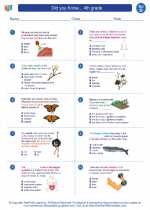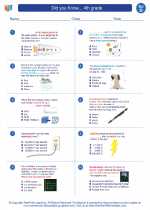Asexual Reproduction
Asexual reproduction is a type of reproduction that only involves one parent. The offspring produced are genetically identical to the parent.
Methods of Asexual Reproduction:
- Binary Fission: The parent organism divides into two equal parts, producing two identical offspring. This method is common in single-celled organisms like bacteria and amoeba.
- Budding: A small part of the parent organism grows as an outgrowth and eventually detaches to form a new individual. This method is seen in organisms like yeast and hydra.
- Regeneration: The ability of an organism to regrow a lost body part into a complete organism. For example, starfish can regenerate a new body from a lost arm.
- Spore Formation: Specialized reproductive cells called spores are produced by the parent organism and develop into new individuals. This method is observed in fungi and some plants.
Advantages and Disadvantages of Asexual Reproduction:
Asexual reproduction offers advantages such as rapid reproduction and efficient use of resources. However, it also leads to limited genetic diversity and makes the population vulnerable to diseases and environmental changes.
Examples of Asexual Reproduction:
Common examples of asexual reproduction include bacteria reproducing by binary fission, yeast reproducing by budding, and plants reproducing through runners or tubers.
Study Tips for Asexual Reproduction:
- Understand the different methods of asexual reproduction and their specific examples.
- Compare and contrast asexual reproduction with sexual reproduction to understand their differences and advantages/disadvantages.
- Review the importance of genetic diversity in a population and how asexual reproduction affects it.
- Practice identifying examples of asexual reproduction in different organisms.
◂Science Worksheets and Study Guides Fourth Grade. Did you Know... 4th grade
Study Guide Did you Know... 4th grade
Did you Know... 4th grade  Worksheet/Answer key
Worksheet/Answer key Did you Know... 4th grade
Did you Know... 4th grade  Worksheet/Answer key
Worksheet/Answer key Did you Know... 4th grade
Did you Know... 4th grade  Worksheet/Answer key
Worksheet/Answer key Did you Know... 4th grade
Did you Know... 4th grade 

 Worksheet/Answer key
Worksheet/Answer key
 Worksheet/Answer key
Worksheet/Answer key
 Worksheet/Answer key
Worksheet/Answer key

The resources above cover the following skills:
Core Ideas for Knowing Science
Life Science
Organisms are organized on a cellular basis and have a finite life span.